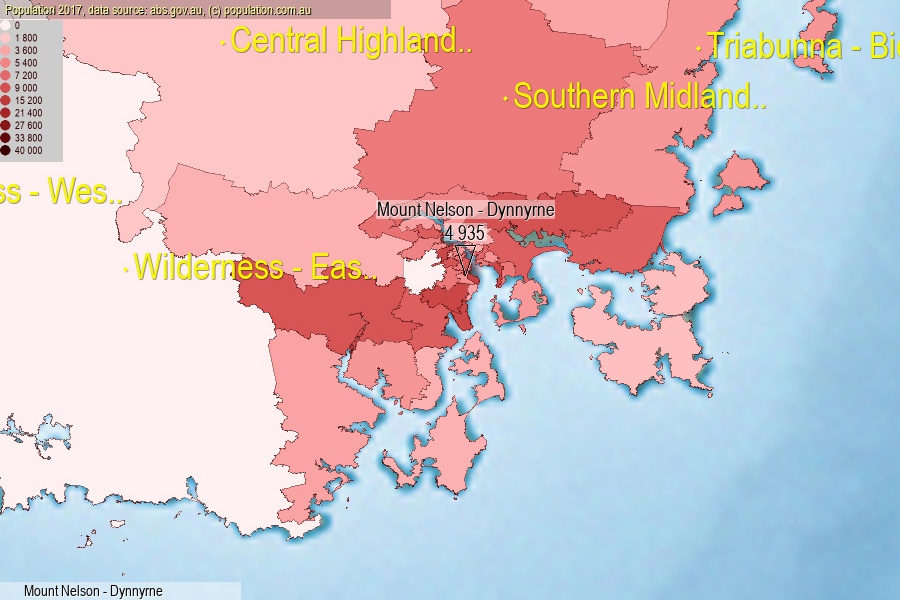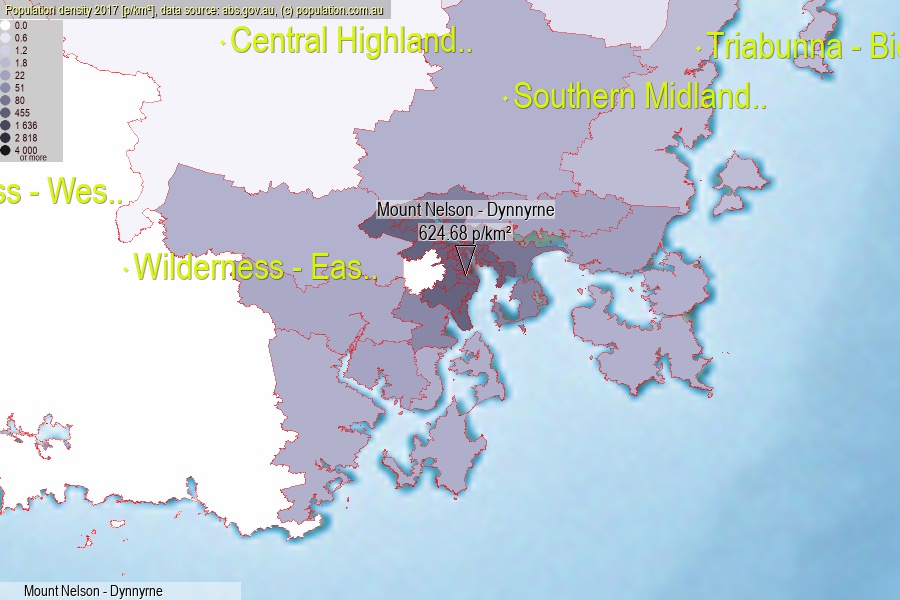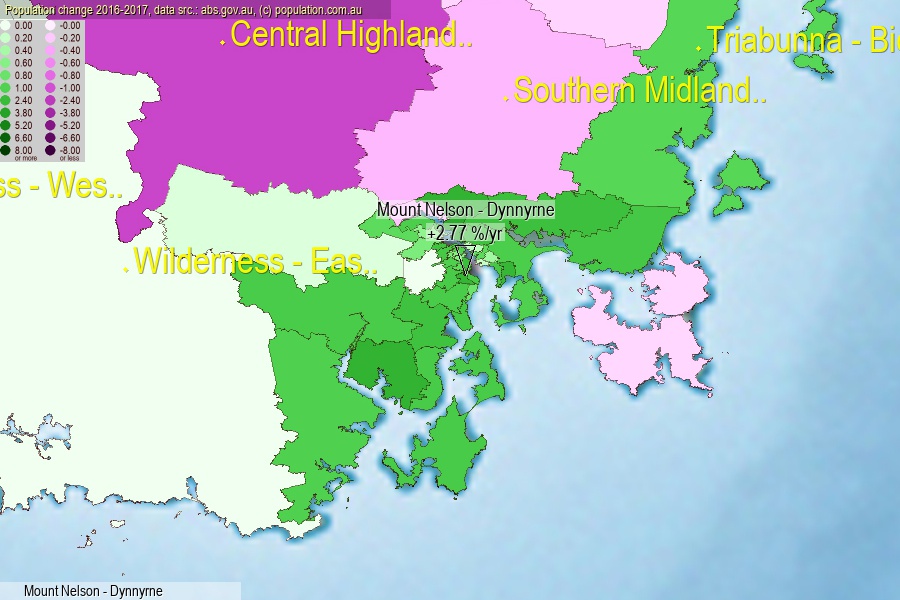 population.com.au
population.com.auLast official estimated population of Mount Nelson - Dynnyrne (as Statistical Area Level 2) was 4 935 people (on 2017-06-30)[2]. This was 0.02% of total Australian population and 0.937% of TAS population. Area of Mount Nelson - Dynnyrne is 7.90 km², in this year population density was 624.68 p/km² . If population growth rate would be same as in period 2016-2017 (+2.77%/yr), Mount Nelson - Dynnyrne population in 2025 would be 6 141. [0]



Click to enlarge. Mount Nelson - Dynnyrne is located in the center of the images.
Population [people], population density [p./km²] and population change [%/year] [2]
View borders » (new window) [4]
[1991-1992] +0.55 %/Yr.
[1992-1993] +0.35 %/Yr.
[1993-1994] +0.65 %/Yr.
[1994-1995] +0.42 %/Yr.
[1995-1996] +0.10 %/Yr.
[1996-1997] -0.52 %/Yr.
[1997-1998] -0.62 %/Yr.
[1998-1999] -0.57 %/Yr.
[1999-2000] -0.50 %/Yr.
[2000-2001] -0.33 %/Yr.
[2001-2002] +1.26 %/Yr.
[2002-2003] +2.54 %/Yr.
[2003-2004] +3.31 %/Yr.
[2004-2005] +1.65 %/Yr.
[2005-2006] -0.12 %/Yr.
[2006-2007] +0.79 %/Yr.
[2007-2008] +0.37 %/Yr.
[2008-2009] +1.24 %/Yr.
[2009-2010] +1.22 %/Yr.
[2010-2011] +1.19 %/Yr.
[2011-2012] +0.62 %/Yr.
[2012-2013] +0.73 %/Yr.
[2013-2014] +1.16 %/Yr.
[2014-2015] +1.66 %/Yr.
[2015-2016] +1.87 %/Yr.
[2016-2017] +2.77 %/Yr.
[0] Calculated with linear interpolation from officially estimated population
[1] Read more about SA2 and Australian Statistical Geography Standard (ASGS) on abs.gov.au
[2] Population data from Australian Bureau of Statistics (Population and density: 2017; change: 2016-2017)
[3] Digital Boundaries: Australian Statistical Geography Standard (ASGS) 2016.
[4] Border coordinates are simplifyed using Ramer-Douglas-Peucker algorithm.